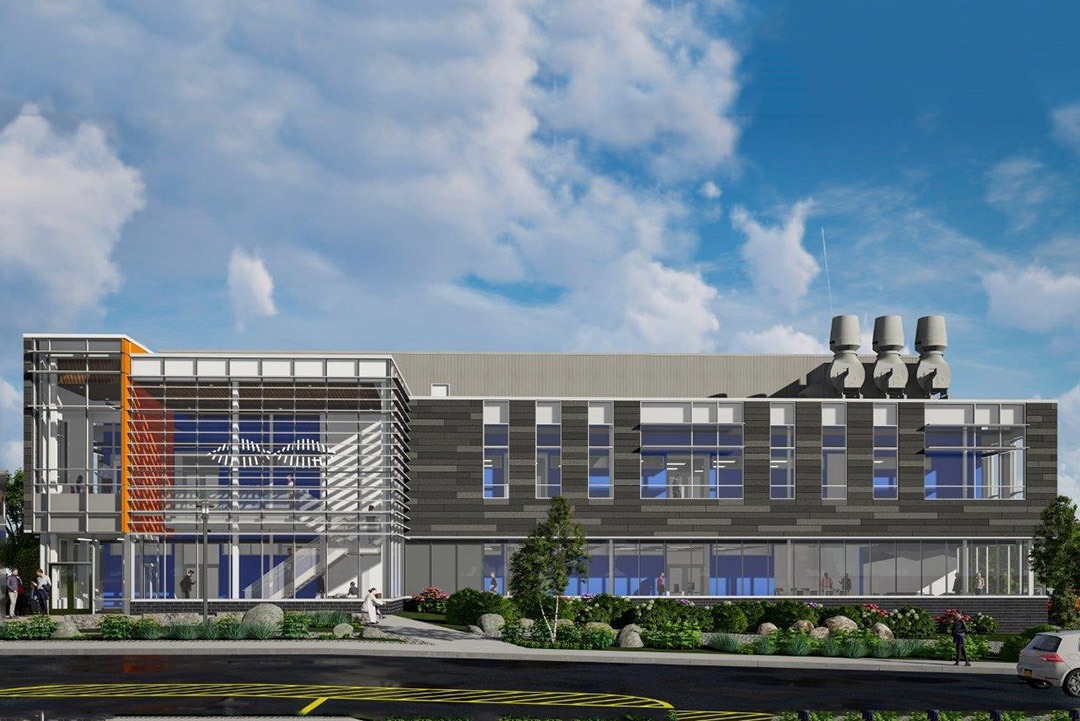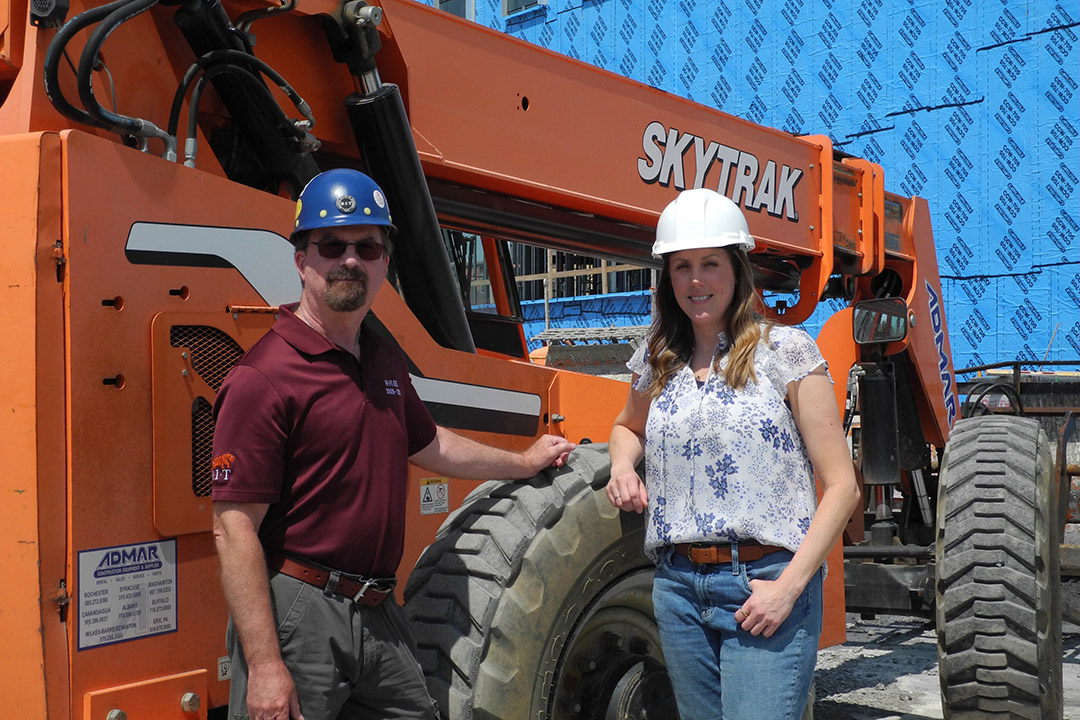Construction nearly complete for new research building
Two-story building marks an evolution of open function and style to balance RIT’s ‘Brick City’ appeal
Facilities Management Services/RIT
A rendering of the new research building that is under construction on the southwest side of campus near Global Village.
The new RIT research building is in its final construction phase with exterior work nearly complete and interior design set to begin. Structural work that started in early 2022 is expected to be complete by fall 2024 with move-in of several campus research teams by the new year.
Combining a more open look and flexible spaces over two floors, the research building complements RIT’s traditional bricks and will showcase activities and people within the building, said Tori Budgeon-Baker, associate director of Planning and Design Services, part of RIT’s Facilities Management Services (FMS).
“Our buildings were already evolving with new materials and styles that complement the bricks,” said Budgeon-Baker.
Provided
Project managers Mark Williams and Jennifer Wozniak are overseeing the construction of RIT’s newest research building.
Mark Williams, principal project manager with RIT’s FMS Construction Services, agreed. “Buildings can look like a battleship with no windows, or you can make the façade nicer, classier in appearance to the outside world.”
Research awards submitted and received by faculty as well as national funding sources for economic development have increased to record levels prompting the need for more research laboratory space.
The 39,000-square-foot building, a slight increase from the original project proposal, was made possible through early planning and site location.
“We actually grew the building a bit,” Williams said. “The site could take it; the budget was such that we could make it a little bigger than was originally conceived. When we started putting the pieces together—the service core with the plans for movement around the building—it just netted out a much larger building.”
Having a similar look to the Student Hall for Exploration and Development, with more windows to show activity in some areas and inner service corridors for utilities, the space is being readied for 18 labs—eight on the first floor and 10 on the second. Several lab spaces in the new building have been allotted to RIT’s College of Science, Golisano College of Computing and Information Sciences, and Kate Gleason College of Engineering. Other spaces will be assigned as new faculty-researchers are recruited. All have the capacity for both wet and dry labs—those needing special fume hoods, water or electrical utilities, and for bio-level safety measures, as well as those that will be equipment and computer heavy.
“We have standardized, finished spaces as well as those that have not yet been built out, and this will happen as the researchers begin to move in,” said Budgeon-Baker. “This is a better approach, rather than anticipating needs, like we did with Institute Hall. It saves on steps and provides far more flexibility.”
Project leaders
Architects for the project are HBT Architects, part of MRB Group, who also worked on the SHED project with William Rawn Associates. The Construction Management firm is DGA Builders. Most of these companies and personnel are familiar names to the Rochester construction community.
Mark Williams, principal project manager, has led several campus projects with each of the companies. “We talk about how small the construction community is in Rochester. The current president of DGA is the son of my mentor when I first came to Rochester nearly 40 years ago,” said Williams, who is retiring at the end of this fiscal year. He is handing off projects to colleague Jennifer Wozniak.
Wozniak ’06 (civil engineering technology) has been with the Facilities Management Services team for just under five months and is no stranger to RIT. She worked closely with Williams as a co-op with the Pike Company during the construction of the CBET building in 2005. “I’ve come full circle,” said Wozniak.




